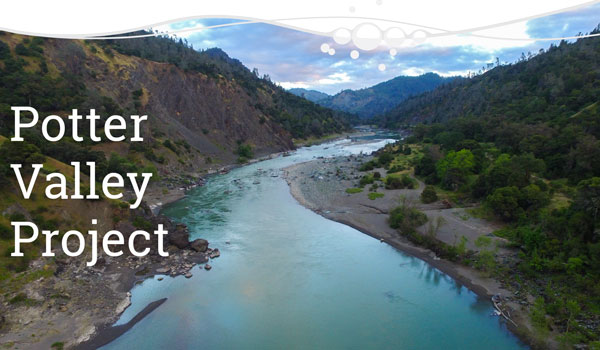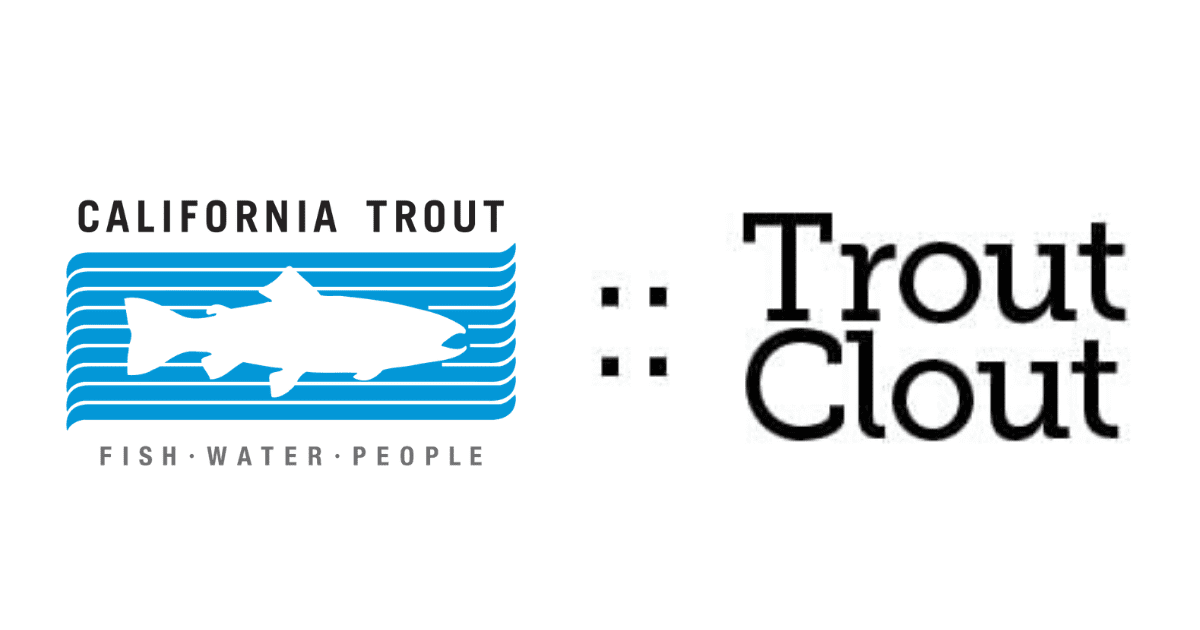Trout Clout: Broad-Based Partnership Takes Next Step Toward Two-Basin Solution for Eel and Russian Rivers
Broad-Based Partnership Takes Next Step Toward Two-Basin Solution for Eel and Russian Rivers
California Trout is excited to announce that we are taking a huge step towards opening up the upper habitat of the Eel River for salmonids for the first time in over 110 years. In partnership with Humboldt County, Sonoma Water Agency, and Mendocino Inland Water and Power Commission, CalTrout has submitted a Notice of Intent to apply for a new license for the Potter Valley Project.
The Project is located on the Eel River and the East Branch Russian River in Mendocino and Lake Counties, California. It includes Lake Pillsbury, a 2,300-acre storage reservoir impounded by Scott Dam; the 106-acre Van Arsdale Reservoir, impounded by the Cape Horn Diversion Dam; and a tunnel and penstock across a natural divide to the powerhouse located in the headwaters of the Russian River Basin. The Project was built to store, then divert, Eel River Water to a powerhouse located on the Russian River.
Potter Valley is currently licensed by Pacific Gas and Electric Company (PG&E), but on January 25, 2019, PG&E withdrew both its Notice of Intent (NOI) and Pre-Application Document (PAD) and formally discontinued its efforts to relicense the Project. The company determined that the Project no longer fits with PG&E’s energy portfolio and was estimated to be costing the company between $7 and $10 million dollars a year in operation and maintenance costs associated with the aging infrastructure. This determination coincided with PG&E declaring bankruptcy and left the door open for an alternative Project Proposal.
With help from the Ad hoc Committee led by Congressman Huffman and committed to finding a ‘Two-basin Solution’ for the Project, CalTrout has spent the last two years working to find a solution that opens passage above Scott Dam without endangering the water security needs for the Russian River. This Project represents the nexus between water security, fish passage, complicated water rights concerns, and all the political challenges that come with a large-scale project like Potter Valley.
“CalTrout is committed to ensuring that future operations of the Potter Valley Project create the conditions under which native Eel River steelhead and salmon can thrive in the context of a two-basin solution,” said California Trout Executive Director Curtis Knight. “The Eel River was once an incredibly productive watershed, and it holds tremendous promise for returning salmon and steelhead to abundance. Our objective is to identify a long-term, sustainable and realistic plan for future of the Project that includes returning fish to their historic spawning and rearing grounds above Scott Dam, while using innovative approaches to address the needs of the various stakeholders.”
Over the last several years CalTrout has brought together a diverse coalition of interests who have worked collaboratively to reach the goals of fish passage on the Eel – critical to reviving the abundance of Eel River salmon and steelhead – while at the same time achieving water security on the Russian River.
Our filing with the Federal Energy Regulatory Commission this week takes a large step towards reaching our goals for the Project and we look forward to doubling down on our efforts to find a solution that could deliver enormous benefits to the Eel and Russian River Basins and set precedent for collaborative approaches to hydro project relicensing in California as it faces the realities of climate change.
Read more news coverage below:
“Broad-based partnership takes next step toward two-basin solution for Eel and Russian Rivers.” Eureka Times Standard June 27, 2019
“Plan to take over Potter Valley Project moves forward.” Ukiah Daily Journal June 27, 2019
“Humboldt County Joins North Coast Coalition Seeking to Take Over the Potter Valley Project, Which Diverts Water from the Eel River.” Lost Coast Outpost June 27, 2019






